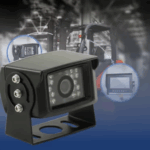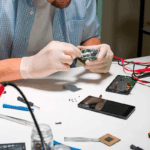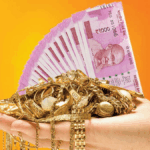
Feeder cables play a crucial role in ensuring efficient signal transmission in various communication systems. These cables serve as the backbone of RF (radio frequency) networks by connecting the antenna to the main transmitter or receiver. The quality and design of feeder cable can significantly affect the performance of communication systems, whether for broadcasting, cellular networks, or satellite communication. This article explores the key features of feeder cables, their applications, and the role of RF feeder cables in modern communication networks.
What is a Feeder Cable?
A feeder cable is a type of coaxial cable designed to transmit RF signals from a radio transmitter to an antenna or from an antenna to a receiver. The cable carries the electrical signal with minimal loss, ensuring that the signal remains strong and clear throughout its journey. The quality of the feeder cable directly impacts the efficiency of the signal transmission, which is why it is essential in various industries, such as telecommunications, broadcasting, and satellite communication.
The term “feeder” refers to the fact that this cable “feeds” the signal from one point to another, typically over long distances. In many applications, maintaining signal strength is crucial, which is why feeder cables are designed with low attenuation, high shielding effectiveness, and durability.
Key Features of Feeder Cables
Feeder cables are specifically designed for RF signal transmission, which requires certain key features:
- Low Signal Loss: The primary function of a feeder cable is to ensure that RF signals are transmitted with minimal attenuation. This means that the signal does not lose its strength significantly as it travels from one end to the other. Low-loss feeder cables are essential in maintaining the quality of communication systems over long distances.
- High Shielding: RF feeder cables often encounter electromagnetic interference (EMI) from external sources. To counter this, feeder cables are equipped with shielding made from aluminum foil or copper braid, which helps to protect the signal from external interference.
- Durability: Feeder cables are frequently exposed to harsh environmental conditions, especially in outdoor installations. They are designed to withstand UV rays, moisture, extreme temperatures, and physical damage, ensuring reliable performance over time.
- Flexibility: Depending on the installation requirements, feeder cables may need to be bent or routed through tight spaces. Flexibility in the cable design helps ensure easier installation without compromising signal integrity.
Types of Feeder Cables
Several types of feeder cables are available, each designed for specific applications and performance requirements. The most common types include:
- Coaxial Feeder Cables: These are the most widely used type of feeder cables in RF systems. Coaxial cables consist of a central conductor, dielectric insulator, outer conductor (shield), and protective jacket. This structure ensures low attenuation and high shielding effectiveness, making coaxial feeder cables ideal for long-distance signal transmission.
- Waveguide Feeder Cables: Waveguide feeder cables are used in high-frequency applications, such as radar systems and satellite communication. They offer excellent signal transmission with minimal loss at higher frequencies but are less flexible and more expensive than coaxial cables.
- Twin-Lead Feeder Cables: These cables consist of two parallel conductors, typically used in low-frequency RF systems like AM and FM radio antennas. Twin-lead cables are less common than coaxial cables and are often found in specific niche applications.
- Heliax Feeder Cables: Heliax cables are a type of coaxial cable designed for high-power applications. They feature a corrugated outer conductor, which provides additional flexibility and durability. Heliax cables are commonly used in cellular base stations and broadcast towers.
Applications of Feeder Cables
Feeder cables are integral to various communication systems, ensuring the efficient transmission of RF signals. Some of the most common applications include:
- Telecommunications: In telecommunications networks, feeder cables connect the antennas to the base stations or repeaters. The low-loss nature of these cables ensures that the signal remains strong as it travels between different components of the network. RF feeder cables are particularly essential in cellular networks, where maintaining signal strength is critical for ensuring reliable communication over large areas.
- Broadcasting: Broadcasting systems, including television and radio, rely on feeder cables to carry RF signals from the transmitter to the broadcast antenna. These cables ensure that the broadcast signal is transmitted clearly and efficiently, reducing the need for additional amplifiers or signal boosters. RF feeder cables are also used in digital broadcasting systems, where signal integrity is critical to maintaining the quality of audio and video content.
- Satellite Communication: In satellite communication systems, feeder cables are used to transmit signals between the ground station and the satellite dish. The low-loss characteristics of these cables are vital in maintaining a strong signal connection, even over long distances. RF feeder cables in satellite communication systems must also be highly durable to withstand outdoor conditions and potential interference from other electronic devices.
- Military and Aerospace: The military and aerospace industries use feeder cables in a variety of applications, including radar systems, communication networks, and navigation equipment. In these fields, maintaining signal integrity is critical for mission success. RF feeder cables are designed to operate reliably in extreme conditions, ensuring that military and aerospace systems function as expected.
- Wi-Fi and Wireless Networks: Wireless networks, including Wi-Fi systems, use feeder cables to connect the antenna to the main access point. These cables are essential for ensuring strong and stable wireless signals, especially in large buildings or outdoor installations. RF feeder cables used in Wi-Fi systems are typically designed for high-frequency signal transmission, minimizing loss and ensuring good network performance.
Factors to Consider When Choosing RF Feeder Cables
When selecting RF feeder cables, several key factors should be taken into consideration to ensure optimal performance:
- Attenuation: Low attenuation is crucial for maintaining signal strength over long distances. When choosing a feeder cable, consider the level of attenuation for the frequency range of your application.
- Frequency Range: Different types of feeder cables are suited for different frequency ranges. Make sure to select a cable that is appropriate for the specific frequency requirements of your system.
- Shielding Effectiveness: In environments where electromagnetic interference is a concern, choose RF feeder cables with high shielding effectiveness. Double-shielded cables are often a good choice in these situations.
- Durability and Environmental Resistance: If the feeder cable will be used in outdoor installations, ensure that it is designed to withstand harsh conditions, including UV rays, moisture, and temperature fluctuations.
- Flexibility: Consider the installation requirements when selecting a feeder cable. If the cable needs to be routed through tight spaces, choose a cable that offers good flexibility without compromising performance.
Conclusion
Feeder cables, especially RF feeder cables, are essential components of modern communication systems. Their ability to transmit signals over long distances with minimal loss makes them indispensable in industries such as telecommunications, broadcasting, satellite communication, and military applications. By understanding the different types of feeder cables and the factors to consider when choosing the right cable, you can ensure that your communication system performs efficiently and reliably.
Selecting the right RF feeder cable involves evaluating key factors such as attenuation, frequency range, shielding effectiveness, and durability. With the right feeder cable in place, you can maintain signal strength and minimize interference, ensuring high-quality communication across your network.







